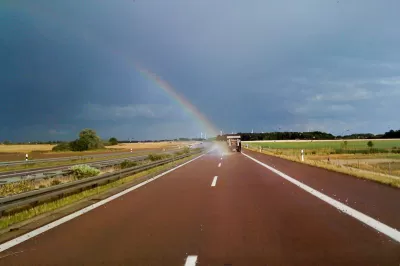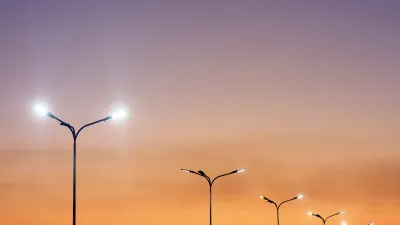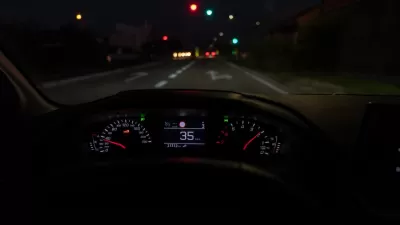As more municipalities are shutting off lights for energy savings, technological innovations are leading the way in new lighting and paving systems to make up for these economic and environmental constraints.

As Jon Scott of Woodhouse discussed in a recent post, many new paving methods equipped with smart technologies are popping up throughout the world. One called George Washington University’s Solar Walk, opened in autumn of 2013 and "features solar panels incorporated into an overhead trellis, and 27 slip-resistant, semi-transparent walkable tiles. The tiles contain photovoltaic technology to convert sunlight into electricity, which in turn powers the 450 LEDs that dot their borders. Combined, the tiles have an average peak capacity of 400W." While most people think of pathways as only having one use (i.e., enhancing pedestrian mobility), the Solar Walk is also a power source and a light source.
Another innovation Scott discusses is the paving of paths with "special minerals that absorb UV light during the day, and emit a soft glow during hours of darkness." According to the manufacturers of these paths, "the luminosity of the pathway adjusts to compensate for the atmospheric light levels – brighter on pitch black nights, and dimmer on lighter evenings. The ‘Starpath’ is a treatment that can be directly applied to an existing surface without the need to take up the original path and re-lay it.... In a time when local authorities are reducing electricity consumption to save money, a new surface that acts as a light source and can be applied in a matter of hours seems like a very attractive option."
Scott also discusses Idaho-based Solar Roadways's project of paving tarmacked surfaces with solar panels, also previously reported on Planetizen. Scott lauds how this innovation for turning "previously unproductive landmass into a renewable energy powerhouse. The solar energy collected by the smart surface could be used to feed the grid during the day time, or even power things such as heating elements under the surface to clear ice and snow from the roads in the winter. Eventually, it might be possible to power electric cars as they drive along. This would be a huge development for electric vehicles, because with current road surfaces and charging systems, they have a limited range that precludes long-distance journeys."
FULL STORY: Can solar roadways and glow-in-the dark footpaths be the future of the road safety?

Manufactured Crisis: Losing the Nation’s Largest Source of Unsubsidized Affordable Housing
Manufactured housing communities have long been an affordable housing option for millions of people living in the U.S., but that affordability is disappearing rapidly. How did we get here?

Americans May Be Stuck — But Why?
Americans are moving a lot less than they once did, and that is a problem. While Yoni Applebaum, in his highly-publicized article Stuck, gets the reasons badly wrong, it's still important to ask: why are we moving so much less than before?

Using Old Oil and Gas Wells for Green Energy Storage
Penn State researchers have found that repurposing abandoned oil and gas wells for geothermal-assisted compressed-air energy storage can boost efficiency, reduce environmental risks, and support clean energy and job transitions.

Updating LA’s Tree Rules Could Bring More Shade to Underserved Neighborhoods
A new USC study finds that relaxing Los Angeles’ outdated tree planting guidelines could significantly expand urban tree canopy and reduce shade disparities in lower-income neighborhoods, though infrastructure investments are also needed.

California's Canal Solar Projects Aim to Conserve Resources and Expand Clean Energy
California’s Project Nexus has begun generating electricity from solar panels installed over irrigation canals, with researchers and state agencies exploring statewide expansion to conserve water and boost clean energy production.

HHS Staff Cuts Gut Energy Assistance Program
The full staff of a federal program that distributes heating and cooling assistance for low-income families was laid off, jeopardizing the program’s operations.
Urban Design for Planners 1: Software Tools
This six-course series explores essential urban design concepts using open source software and equips planners with the tools they need to participate fully in the urban design process.
Planning for Universal Design
Learn the tools for implementing Universal Design in planning regulations.
Heyer Gruel & Associates PA
City of Moreno Valley
Institute for Housing and Urban Development Studies (IHS)
City of Grandview
Harvard GSD Executive Education
Salt Lake City
NYU Wagner Graduate School of Public Service
City of Cambridge, Maryland





























